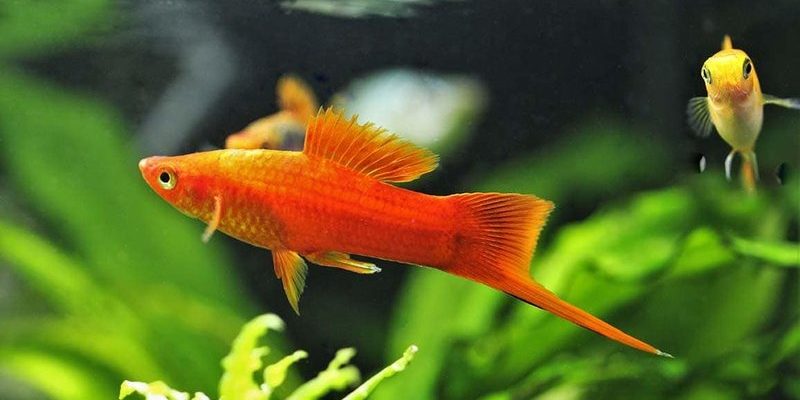
Picture this: you’ve got a beautiful aquarium filled with colorful plants and hidden treasures, just waiting for the right fish family to call it home. Swordtails, with their iconic sword-like tails and friendly nature, can bring a vibrant touch to your underwater oasis. But before you dive in, you’ll want to know who can and can’t share the tank with them. Let’s explore the compatibility of swordtails and find out the best tankmates for these lively little fish.
Understanding Swordtails: Nature and Behavior
To appreciate how swordtails fit into a community tank, let’s start by getting to know them better. Swordtails (Xiphophorus helleri) are known for their unique, elongated tails that resemble swords—hence the name. They’re generally peaceful fish, making them popular choices for beginner aquarists. You might say they have a “team player” attitude, thriving in groups often called schools.
Swordtails are also notorious for their playful behavior. They love to swim around, darting between plants and structures in the tank. Think of them as the social butterflies of the fish world. However, this high energy can sometimes lead to territorial disputes, especially if they feel overcrowded. So, having enough space and the right companions can make all the difference in their happiness.
Compatibility: What to Look for in Tankmates
Now that we know a bit about swordtails, let’s talk about compatibility. Not every fish will get along with these lively swimmers. When choosing tankmates, consider the following factors:
– Temperament: Look for peaceful species that won’t bully or stress your swordtails.
– Size: Ensure tankmates are similar in size to avoid predation. Small, nippy fish might be too aggressive for larger swordtails.
– Water Conditions: Swordtails prefer slightly alkaline water around 75-82°F. Ensure your chosen fish thrive in similar conditions.
Here’s the thing: if you throw a chaotic fish into a peaceful tank, it can cause turmoil. The key is to create a balanced environment where all fish can coexist happily.
Best Tankmates for Swordtails
So, who can swim alongside your swordtails without causing ripples? Here are some top picks that can coexist peacefully:
- Platies: These friendly fish share similar water requirements and are generally peaceful.
- Guppies: Colorful and lively, guppies enjoy the same environment as swordtails.
- Corydoras Catfish: Bottom-dwellers that help keep the tank clean while not bothering the swordtails.
- Zebra Danios: These swimmers are active and social, making them great companions.
These fish typically match swordtails’ energy and temperament, helping create a harmonious tank.
Tankmates to Avoid
While there are plenty of great companions for swordtails, there are also some fish you’ll want to steer clear of. Here’s a quick list of fish that generally don’t mesh well with swordtails:
- Angelfish: Their territorial nature can stress out swordtails.
- Betta Fish: Their aggressive behavior might lead to conflict.
- Red-tailed Black Sharks: They can become bullies and assert their dominance.
Choosing the wrong tankmates can lead to stress or even harm, so it’s essential to be mindful when you’re adding new fish to your setup.
Creating a Balanced Community Tank
Once you’ve selected the right fish for your swordtail community, you need to focus on creating a balanced environment. Here are a few tips to help you out:
– Provide Hiding Spots: Use plants, rocks, and decorations to create hiding places. This setup helps fish feel secure and reduces territorial disputes.
– Maintain Water Quality: Regularly check and maintain water conditions to keep your fish healthy and stress-free. Stable environments lead to happier fish.
– Monitor Behavior: After adding new fish, watch their interactions. It’s common for new fish to establish a hierarchy, but aggressive behavior should be addressed immediately.
Let me explain: a well-balanced community tank isn’t just about who swims together; it’s about ensuring they thrive together.
Common Issues and Troubleshooting
Even the best-made plans can hit snags. Here are a few common issues you might face when keeping swordtails with other fish—and how to handle them:
– Aggression: If one fish shows signs of bullying, you may need to separate them or rearrange the tank to disrupt territorial behavior.
– Breeding: Swordtails are prolific breeders. If you end up with too many fry, consider having a separate tank to manage the young fish.
– Disease Spread: New additions can introduce illnesses. Quarantine any new fish for at least two weeks to prevent problems.
You might be wondering if all these considerations are worth the effort. Absolutely! A well-planned community tank can offer endless enjoyment and a thriving environment for your swordtails.
Creating a vibrant community tank with swordtails can be a rewarding experience. By picking the right tankmates and maintaining a balanced environment, you’ll set the stage for a happy aquarium. Remember to consider the temperament, size, and water requirements of potential companions.
Ultimately, the goal is to create a lively ecosystem where all fish can coexist harmoniously. So, grab your net, do your research, and get ready to enjoy your beautiful tank filled with happy swordtails and their finned friends. Your aquatic adventure awaits!

